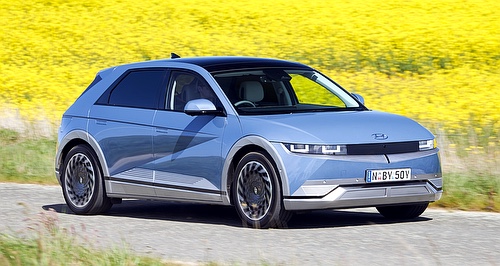Make / Model Search
News - General News - Electric VehiclesEVs drain on grid minimal: reportRight now, the global passenger EV fleet consumes a similar amount of electricity as Singapore7 Oct 2022 NAY sayers point to possible blackouts when millions of BEVs plug in to recharge but information published this week by Bloomberg Business suggests otherwise.
The publication quoted its own offshoot called Bloomberg New Energy Finance (BNEF) which says EVs currently account for a small impost on electrical generation globally.
BNEF says that by the end this year, there will be about 27 million plug-in passenger vehicles on the road globally. Based on average driving distances, vehicle efficiencies in different countries, segment sales, the split between full electrics and plug-in hybrids and a few of other factors, BNEF estimates that global electricity demand from these EVs will be around 60 terawatt-hours (TWh) this year.
That is an unfamiliar number and challenging to take on board, however, BNEF suggest thinking about it thus… Compared to global electricity demand, which will be somewhere around 28,000TWh this year, the 60TWhs going into EVs will add around 0.2 per cent to the total.
Looking at it another way, the global passenger EV fleet consumes a similar amount of electricity as Singapore. It is an insignificant amount of electric power in the greater scheme of things.
So, who is BNEF you may ask and is their advice worthwhile?
BNEF says it provides “forward-thinking” primary research and analysis (advice) on the trends driving the transition to a lower-carbon economy.
They retain a team of ‘trusted’ experts across six continents that allow the company to leverage sophisticated data sets to create clear perspectives and in-depth forecasts. These are built to frame the financial, economic and policy implications of industry-transforming trends and technologies.
BNEF says its approach provides independent analysis and insight through rigorous examinations of specific sectors and markets, as well as broad, cross-sector, global trends and implications.
The company’s EV recharging statements were prompted by recent events in California where homeowners were asked to reduce electricity consumption to help avoid blackouts as temperatures soared and the power system struggled to keep up.
The plea was effective with consumers temporarily dialling back demand enough to keep the lights on across the state.
However, the Bloomberg Business report continues: “These sorts of close calls are the stuff of nightmares for system operators, and this specific brush with near-disaster had a new element that caught a lot of attention: a call to electric vehicle owners to avoid charging during peak demand hours.”
Which would seem an over-reaction based on BNEF’s data.
But the directive to reduce EV charging was pounced upon by critics as proof that California’s just-announced plan to phase out sales of new combustion vehicles by 2035 was doomed to fail. Ringing out loud and clear was: “How can the state electrify the vehicle fleet if it can barely keep the lights on?”
EV adoption in large parts of the world is still just getting started, and BNEF is expecting rapid EV adoption in the next two decades, so this picture will change as will electricity demand.
BNEF says its annual EV Outlook has two main scenarios: one that assumes market forces are the main driver of adoption and that no new policies get implemented, and another that assumes every country in the world gets on track for net-zero CO2 emissions by 2050.
“In the first case, dubbed the Economic Transition Scenario, battery-electric vehicles represent three quarters of global passenger vehicle sales by 2040. In the Net Zero Scenario, they’ve almost completely taken over the market in the early 2030s,” says BNEF.
“People may quibble with the specific sales penetration rates in those scenarios, but if you use those two points as a reference, there will be around 730 million passenger EVs in 2040 — about half the total fleet — and increase global electricity demand by about seven per cent in the first scenario. In the Net Zero Scenario, there are over a billion EVs on the road then, adding around nine per cent.”
Something else to consider says the Bloomberg Business report: “Not all EVs are cars. Adding electric buses, trucks and other vehicles into the mix boosts the numbers a bit further, adding somewhere in the range of 11 per cent and 15 per cent to global electricity demand in 2040 under the two scenarios.”
Bloomberg continues: “It gets more interesting if you break this down to a country level. In China, where overall electricity demand is still growing quickly, EVs of all types add about 11 per cent to demand in 2040 in the Economic Transition Scenario. For Europe, it’s closer to 22 per cent, while for India they’re adding just a tiny amount.
According to Bloomberg, in some wealthy countries, EVs are what’s keeping electricity demand from falling, while in emerging economies they make a modest addition to steady expected increases in overall electricity demand. Playing it out even further, electrifying almost all of road transport by 2050 in the Net Zero Scenario would add around 27 per cent to global electricity demand.
The Bloomberg report concludes by saying: “Integrating EVs into the power system will still require careful planning, incentives for off-peak charging to reduce peak demand, and localized grid reinforcement in many places. As a share of global electricity demand, though, the contribution will still be very modest for quite a few years.”
 Read more |
Click to shareGeneral News articlesResearch General News Motor industry news |












Facebook Twitter Instagram